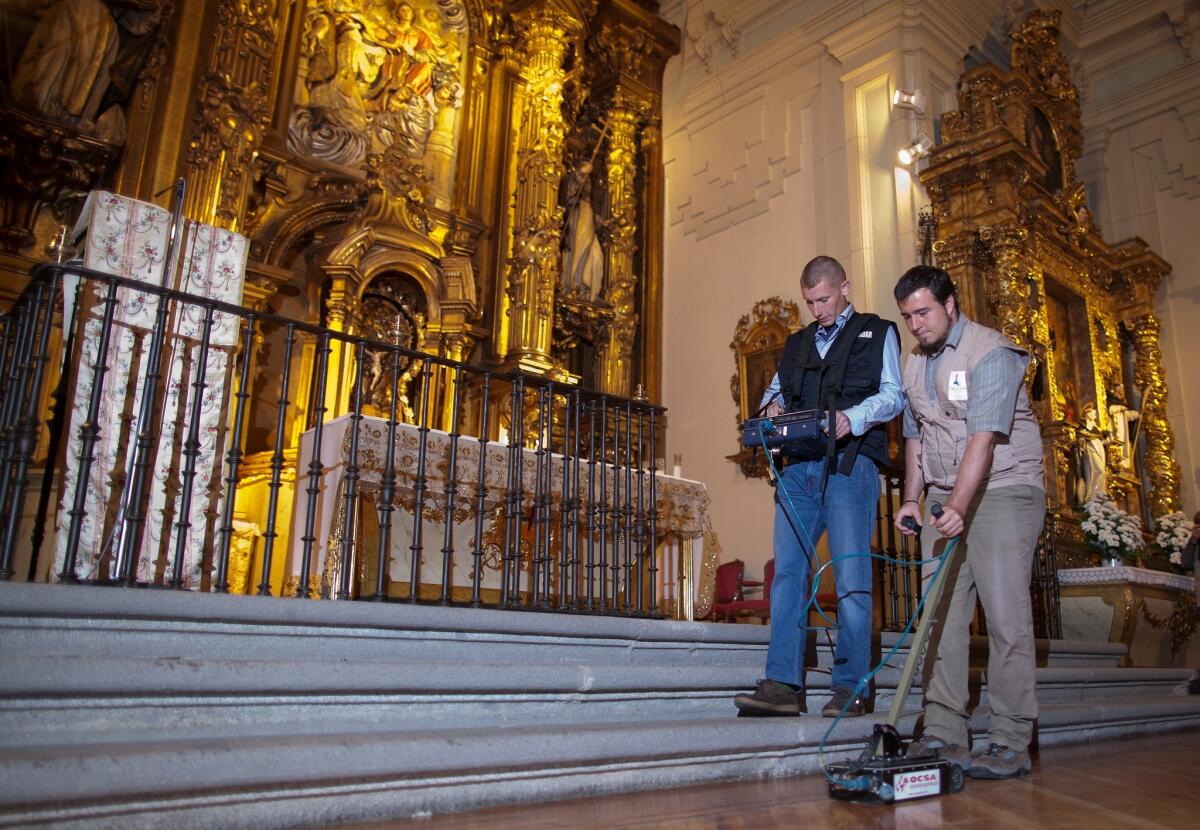A quest to find Cervantes’ bones

A quest to find the bones of Miguel de Cervantes is on in Spain.
The author of “Don Quixote” died in 1616, and the rough location of his burial is known. He was interred at the Convent of las Trinitarias Descalzas in Madrid.
Where his remains remain there, however, is a mystery.
Now, historian Fernando de Prado is scouring the convent with high-tech equipment to search for bones. It’s taken him years to raise the funding to try to pick out Cervantes from among the others who were also buried there.
Two things make the search possible: The sophistication of the equipment, and the fact that Cervantes has a singular skeleton.
While a soldier, Cervantes lost the use of his left hand and took at least one bullet to the chest. Prado explained to the BBC, “There are less than a dozen people buried here. How many of them could have been men of around 70 years old, with an incapacitated left hand and a bullet wound in the chest?”
Prado believes that if people could visit Cervantes’ remains, they would come to pay tribute.
“Cervantes represents Spain. For us not to know where he’s buried – how can that be? If we don’t appreciate what we have, then we have a very serious cultural problem.”
ALSO:
Iain Sinclair walks in literary footsteps in ‘American Smoke’
Francine Prose’s ‘Lovers at the Chameleon Club’ imagines interwar Paris
Emma Donoghue’s ‘Frog Music’ finds murder lurking in old San Francisco
More to Read
Sign up for our Book Club newsletter
Get the latest news, events and more from the Los Angeles Times Book Club, and help us get L.A. reading and talking.
You may occasionally receive promotional content from the Los Angeles Times.






